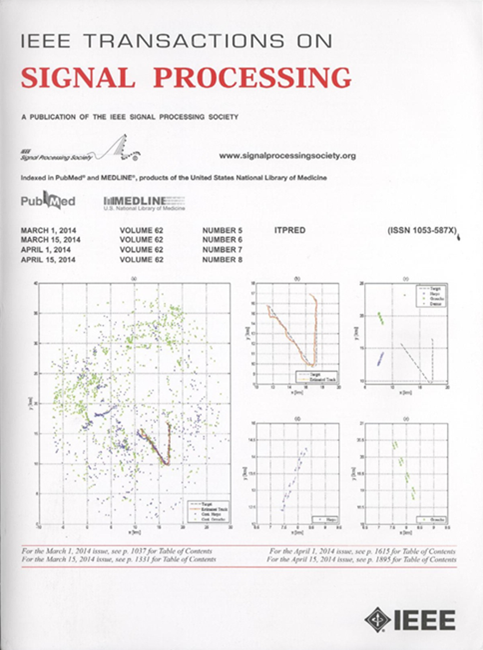基于拉格朗日对偶的协同蜂窝网络qos波束形成与压缩设计
IF 4.6
2区 工程技术
Q1 ENGINEERING, ELECTRICAL & ELECTRONIC
引用次数: 0
摘要
本文研究了下行协同蜂窝网络中基于服务质量(QoS)的联合波束形成和压缩设计问题。在下行协同蜂窝网络中,多个类中继基站(BSs)通过速率受限的前传链路连接到中央处理器,协同向用户发送消息。在所有用户的信噪比(SINR)约束和所有BSs的前传速率约束下,将感兴趣的问题表示为BSs总发射功率的最小化。本文首先通过证明该联合优化问题的半定松弛(SDR)的紧性,证明了该联合优化问题与其拉格朗日对偶之间不存在对偶间隙。然后,基于上述对偶结果,我们提出了一种求解所考虑问题的高效算法。该算法明智地利用了所考虑问题的增强KKT条件的特殊结构,并通过两次不动点迭代逼近满足增强KKT条件的解。该算法的两个关键特征是:(1)能够检测所考虑的问题是否可行,并在可行时找到全局最优解;(2)该算法的不动点迭代都是线性收敛的,且不动点迭代中的函数求值计算量少,效率高。数值结果表明了该算法的全局最优性和有效性。本文章由计算机程序翻译,如有差异,请以英文原文为准。
QoS-Based Beamforming and Compression Design for Cooperative Cellular Networks via Lagrangian Duality
This paper considers the quality-of-service (QoS)-based joint beamforming and compression design problem in the downlink cooperative cellular network, where multiple relay-like base stations (BSs), connected to the central processor via rate-limited fronthaul links, cooperatively transmit messages to the users. The problem of interest is formulated as the minimization of the total transmit power of the BSs, subject to all users’ signal-to-interference-plus-noise ratio (SINR) constraints and all BSs’ fronthaul rate constraints. In this paper, we first show that there is no duality gap between the considered joint optimization problem and its Lagrangian dual by showing the tightness of its semidefinite relaxation (SDR). Then, we propose an efficient algorithm based on the above duality result for solving the considered problem. The proposed algorithm judiciously exploits the special structure of an enhanced Karush-Kuhn-Tucker (KKT) conditions of the considered problem and approaches the solution that satisfies the enhanced KKT conditions via two fixed point iterations. Two key features of the proposed algorithm are: (1) it is able to detect whether the considered problem is feasible or not and find its globally optimal solution when it is feasible; (2) it is highly efficient because both of the fixed point iterations in the proposed algorithm are linearly convergent and function evaluations in the fixed point iterations are computationally cheap. Numerical results show the global optimality and efficiency of the proposed algorithm.
求助全文
通过发布文献求助,成功后即可免费获取论文全文。
去求助
来源期刊

IEEE Transactions on Signal Processing
工程技术-工程:电子与电气
CiteScore
11.20
自引率
9.30%
发文量
310
审稿时长
3.0 months
期刊介绍:
The IEEE Transactions on Signal Processing covers novel theory, algorithms, performance analyses and applications of techniques for the processing, understanding, learning, retrieval, mining, and extraction of information from signals. The term “signal” includes, among others, audio, video, speech, image, communication, geophysical, sonar, radar, medical and musical signals. Examples of topics of interest include, but are not limited to, information processing and the theory and application of filtering, coding, transmitting, estimating, detecting, analyzing, recognizing, synthesizing, recording, and reproducing signals.
 求助内容:
求助内容: 应助结果提醒方式:
应助结果提醒方式:


